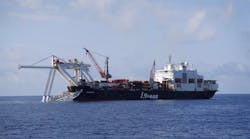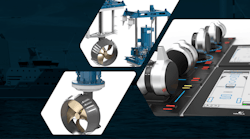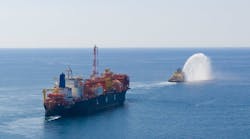Offshore staff
ULSTEINVIK, Norway – ABB is to equip a new platform supply vessel (PSV) with its Onboard DC Grid system.
According to the company, this is a new concept designed to provide high-efficiency power distribution and electric propulsion for a wide range of vessels, including offshore support vessels, tugs, and cargo vessels with low-voltage on-board and power systems up to 20 MW.
The order was placed by Norwegian contractor Myklebusthaug Management, which has commissioned the PSV from the Kleven shipyard in Ulsteinvik. It will feature a full Onboard DC Grid system, including all power, propulsion, and automation systems.
The 93-m (305-ft) long, 4,800-ton MT 6015 PSV is a multipurpose oil field supply and construction vessel due for delivery early in 2013.
Heikki Soljama, head of ABB’s business unit marine and cranes, said: “Myklebusthaug was keen to build an innovative vessel that was ready to accept future energy saving solutions, including energy storage and renewable energy sources. The vessel also had to be very fuel efficient, with low emissions.”
With Onboard DC Grid, ABB has retained most of the proven elements of modern electric propulsion including AC generators and inverter modules. However, the main AC switchboards and propulsion transformers are no longer required. The result, it claims, is a more flexible power and propulsion system, that enables equipment weight savings of up to 30% and reduction of fuel consumption and emissions by up to 20%.
Another advantage touted is that the ship's engines do not have to run at a fixed speed, allowing them to be adjusted to optimize fuel consumption. This should benefit offshore vessels operating in DP mode: here typical electric thruster loads are low but, for safety reasons, the number of engines running is high.
Supplementary DC energy sources such as solar panels, fuel cells, or batteries can be plugged directly into the ship's DC electrical systems, offering further fuel savings.
11/28/2011




